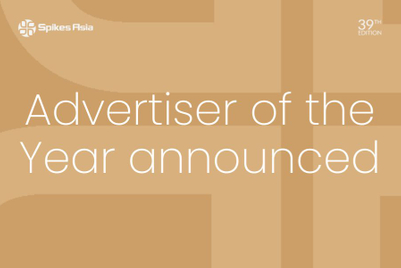
| PARTNER CONTENT |
In-stadium advertising has become a whole new ballgame in the Bundesliga. During the 2018-19 season, Borussia Dortmund (BVB), one of the top clubs in the top German league, became the first football team in the world to use virtual advertising for all 17 of its home matches.
Virtual advertising involves superimposing graphics onto physical perimeter boards during live or pre-recorded matches. With the technology, sponsors can geo-target and deliver dedicated images and messages to different TV audiences, including in their native languages, without affecting the physical experience for fans in the stadium.
By allowing BVB to present different content on digital sideboards for the various markets viewing its matches on TV, virtual advertising has helped the club expand its offerings to new and potential partners and strike up meaningful conversations with fans across the world. This is especially true in China, where BVB has made a major push to elevate its brand and Bundesliga action among the country’s huge – and extremely passionate – market of football fans.
The technology, developed by Supponor and ADI alongside Lagardère Sports, has already proven to be a major boon for BVB. During matches, local partners such as Dortmund-based brewery Brinkhoff’s have continued to reach local fans in Germany while brands such as Tchibo and Evonik have been able to broadcast targeted ads to the Chinese market. Not to mention that, at the exact same time, Chinese brands have streamed their own ads to their local markets.
“Internationalisation is not about showing a Chinese beer partner here in Dortmund – it’s about showing a Chinese beer partner to our Chinese fans. It’s about localisation, it's about targeting,” says Benedikt Scholz, head of international, commercial and new business at BVB. “For us, virtual advertising matches perfectly with our understanding of our international presence.”

Going deeper, getting personal with virtual advertising
Consider the impact of LED advertising in the first place. In the Premier League alone, LED advertising is responsible for delivering over £50 million in sponsorship and advertising revenue for clubs. With the ability to localise content, that figure can expand in a big way.
“New partnerships have already been brokered on the back of the technology going live,” says Lasse Wolter, senior director of marketing development at Lagardère Sports. “Tchibo and Doppelherz had not invested in football or sports advertising before, but they utilised the German ‘Classico’ [FC Bayern Munich playing against Borussia Dortmund] to distribute localised sales offers for the Double11, or ‘Singles Day’, in China on November 11, Asia’s equivalent of ‘Black Friday’.
“They show that, if implemented correctly, virtual advertising opens a lucrative environment for brands that were not previously active in the field.”
Further localisation is the direction where advertising, especially inside football stadiums, is heading. Maybe one day soon we’ll be able to target specific individuals
— Benedikt Scholz, head of international, commercial and new business at BVB
And, for BVB, virtual advertising now plays an important role in upselling existing partnerships and creating additional and increased demand. During a BVB match against Eintracht Frankfurt, Chinese video streaming site PPTV leveraged the technology to strike a chord with fans. The brand let fans communicate personal greetings and messages on the perimeter boards – but only in China. In Germany, fans saw entirely different content provided by other sponsors.
“We don’t have to always be the first mover, but with virtual advertising, it was important to us to be the first,” says Scholz. “It’s an innovative product that gives us new tools and opportunities to target and be more specific in our communication, and to provide our partners with a new level of audience access.”
As importantly, the technology has offered BVB more opportunities to communicate with fans in a global marketplace that increasingly values authenticity, speed, and experiences. “Wherever we tour this summer, we can reach out to fan clubs and let them know that BVB is coming, how to get tickets, how to sign up for special signing sessions with our stars or other fan experiences,” explains Scholz. “It’s a great tool for B2C purposes.”
Paving a way forward for advertisers
While BVB has reported only success from its virtual campaigns, Wolter realises the growth of the technology depends on communication, as well as consistent improvements over time. So far, the technology has only been implemented by a select few football leagues, including the Premier League, La Liga, and now the DFL and Bundesliga. But things are changing.
“It will still take some time to explain what the technology is, how it works, and what the additional benefits of its use will be,” Wolter admits. “It may take work to push what might be seen as a ‘German’ product internationally. The investment is already profitable today, but the market space needs to be educated properly in order to establish its full potential.”
So far, so good. Lagardère Sports has already gotten several bookings on its platform, in addition to all the new partnerships that brands have already struck up with BVB. That success stems largely from the stability of the technology.
It took more than 15 years to introduce the technology to the Bundesliga – not to mention lots of elbow grease to ensure such complex technology was 100-percent stable in order to meet the quality requirements established by both the league and Lagardère Sports. But the technology is there. Now, brands in Asia can start to leverage the power of BVB and the Bundesliga to target fans with more relevant and specific messages than ever during football matches.
“Further localisation is the direction where advertising, especially inside football stadiums, is heading,” says Scholz. “Maybe one day soon we’ll be able to target specific individuals.”



.jpg&h=334&w=500&q=100&v=20250320&c=1)


.jpg&h=334&w=500&q=100&v=20250320&c=1)


.jpg&h=334&w=500&q=100&v=20250320&c=1)









